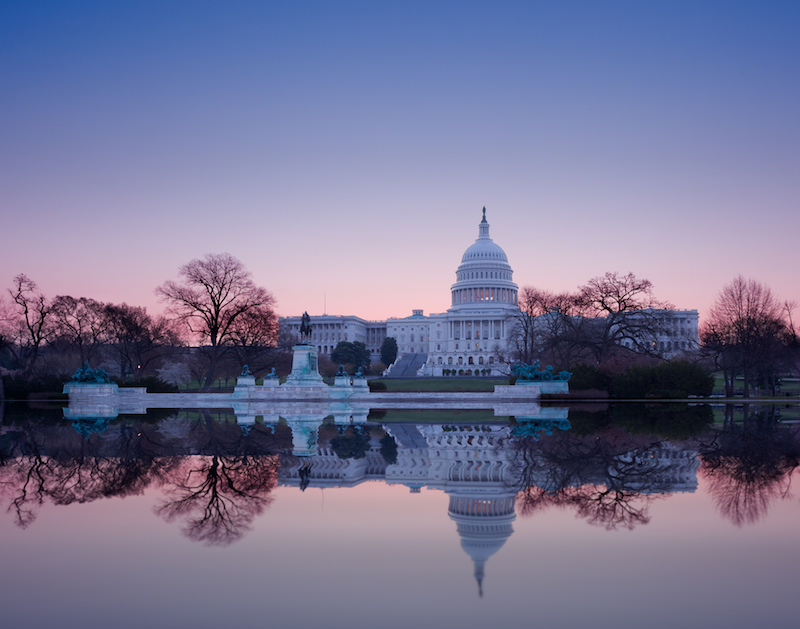
Marchand’s argument questions key regulatory processes and ignores the net benefits of regulation.
In “Challenging the Anti-Regulatory Narrative,” I take issue with three of the central claims made by opponents of the regulatory state: that regulatory action, often undertaken in response to congressional gridlock, is undesirable as a matter of policy; that the regulatory state is an affront to our constitutional system of separation of powers; and that, to solve this problem, Congress should seize greater control over administrative agencies.
On the first, analyses of environmental regulations, which were the focus of my piece, have shown that they produce enormous net benefits—that is, benefits minus costs. On the second, even in the regulations that have been criticized most strongly, such as greenhouse gas regulations, the U.S. Environmental Protection Agency (EPA) acted under delegation given by Congress when it empowered the agency to control “air pollutants” that “endanger public health or welfare.” Finally, on the third, the current calls for Congress to reassert itself are not efforts to improve regulatory policy but instead are part of a concerted campaign to put an end to the protections that save so many lives and produce such large net benefits.
Agreeing with the first two anti-regulatory claims, Ross Marchand, Director of Policy of the Taxpayers Protection Alliance, argues that “modern regulations rely on dubious accounting and were created afoul of the law.” On the third claim, he argues that congressional intervention—in the form of the Regulatory Accountability Act, a bill that passed the House and stalled in the Senate—“can save the regulatory impact analysis process from the lawlessness evident in recent years.” Marchand seeks to cast doubt on the basic value of modern regulatory policy, which has delivered enormous benefits to the American people. But his arguments miss the mark by a wide margin.
Marchand argues that “regulatory agencies often skew systematically flawed cost-benefit analyses to bolster proposed rules.” To support this proposition, he refers to the EPA’s study on the expected benefits and costs of the Clean Air Act from 1990 to 2020, which projected annual net benefits of $1.9 trillion by 2020. Quoting a sentence in the study, Marchand says that “EPA bizarrely assumes that, absent regulation, emissions ‘would increase steadily from 1990 through 2000, 2010, and 2020.’”
But the rest of EPA’s sentence, which Marchand conveniently omits, makes clear that EPA’s conclusion that emissions would increase was not an assumption at all, much less a bizarre one. Instead, the conclusion flowed from EPA’s calculation, based on its economic analysis, that “emissions controls in place by 1990 would not be sufficient to prevent increases in pollutant emissions due to projected growth in economic activity.”
Marchand also takes issue with the use of break-even analysis: “Agencies can get around many types of rational cost-benefit calculations by using a break-even analysis, which shows how much the rule would have to benefit society to justify its cost.” But break-even analysis is not a nefarious end run around cost-benefit analysis, as Marchand suggests. Instead, as the Office of Management and Budget’s Circular A-4—adopted under the George W. Bush Administration—makes clear, break-even analysis is a well-accepted technique to further rationality when the benefits of regulatory action cannot be monetized. And nothing in the Mercatus Center report on which Marchand relies suggests that agencies are using break-even analysis in instances in which a rule’s benefits could be estimated in monetary terms. In fact, the report’s only discussion of a break-even analysis is in giving an example of a regulatory “best practice.”
Marchand’s own example underscores the untenable nature of his argument. He casts doubt on regulations by the U.S. Food and Drug Administration (FDA) protecting the food supply from terrorist attacks. The agency had determined that the regulation would be beneficial if it prevented a terrorist attack every 270 to 470 years, applying this standard to justify the regulation. But Marchand is unconvinced, saying “there is simply no way of knowing whether this is a plausible expectation that outweighs at least $280 million in expected annual costs to producers.” Of course, without a crystal ball it is impossible to know what will happen in the future, but agencies have the unenviable responsibility of needing to make judgements based on limited information. And, in the FDA case that Marchand finds so problematic, the agency was not acting on a whim. Quite to the contrary, the regulation was mandated by the Food Safety Modernization Act of 2011, which directed the Secretary of the U.S. Department of Health and Human Services to issue regulations to protect against the intentional adulteration of food.
Not surprisingly, Marchand does not mention that break-even analysis is also used to justify homeland security measures. In the post-9/11 world, the United States spends a great deal of money to prevent another attack that could, once again, kill thousands of Americans, or worse. The U.S. Department of Homeland Security believes that the probability of such attacks are sufficiently high to justify the costs. Would Marchand really oppose all these measures because, as he says concerning the FDA measures, “there is simply no way of knowing whether this is a plausible expectation?” I really do not think so.
Grasping at straws, Marchand gives two isolated examples of EPA’s alleged wrongdoing to support his broad anti-regulatory screed. The first concerned a disagreement between the Inspector General and EPA’s leadership on whether a particular document was a “highly influential scientific assessment” rather than “influential scientific information.” The most significant conclusion in this report, presented in its first sentence, is missing from Marchand’s piece: “EPA met statutory requirements for rulemaking and generally followed requirements and guidance related to ensuring the quality of the supporting technical information.” Contrary to Marchand’s claim, there was no finding that “the actual process that EPA used likely violated the law.” EPA resolved the issue to the Inspector General’s satisfaction with only minor changes to its documentation procedures and internal guidelines.
Marchand’s second example concerned EPA’s use of social media to support one rule. EPA’s action here was unrelated to the substance of the regulation. Neither example remotely supports Marchand’s general assertion that “modern regulations…were created afoul of the law.”
To address these imagined problems, Marchand argues for the version of the Regulatory Accountability Act that passed the House. Rather than improving cost-benefit analysis, which Marchand says he favors, the bill would dispense with cost-benefit analysis in many cases, requiring agencies to choose the lowest-cost regulatory option, rather than the option that maximizes net benefits—a hallmark of cost-benefit analysis.
But more importantly, the key purpose of the House bill is to make it virtually impossible for agencies to regulate at all. Marchand’s cavalier statement that “the current rulemaking process can benefit from a lengthier trial-like hearing, instead of the notice-and-comment status quo” does not address what is really at stake: upending decades of established administrative law and introducing a requirement so cumbersome that it would make complex regulation virtually impossible.
For example, in one of the isolated instances in which such trial-like hearings were used in the past, it took almost a decade to determine the relatively straightforward question of whether peanut butter should consist of 87.5 percent or 90 percent peanuts. Think of what would happen for rules based on extensive and complex scientific evidence. And under the House’s Regulatory Accountability Act, if such a new regulation ever saw the light of day, it could not go into effect until years later, after the completion of litigation over its validity. In the meantime, the American people would be deprived of the rule’s benefits. In fact, the House bill that Marchand favors is so extreme that the stalled Senate version eliminated some of its most objectionable provisions, though it retained the trial-like hearing requirement.
Of course, every institution, no matter how much good it brings to the American people, has room for improvement. Although we should not scoff at measures that make the American people better off just because even better measures might have been possible, Marchand is right that agencies could put greater effort into evaluating alternatives and attempting to maximize net benefits—not just produce net benefits—whenever feasible. I have written in this vein myself, urging agencies to develop techniques for quantifying and monetizing benefits, so that this inquiry into maximizing net benefits can be performed more consistently.
Had Marchand written a piece about how the regulatory process could be improved, I might have had no qualms. But Marchand has a very different goal here: to sow distrust and opposition to a set of measures that have made Americans much better off than they would otherwise have been. On this score, our perspectives could not be more different.
This essay is part of a three-part series, entitled Dissecting the Debate Over Regulation.




